Exoplanet Discovery: The 7 Earth-Sized Planets of TRAPPIST-1 in Pictures
Planet Orbits Around TRAPPIST-1
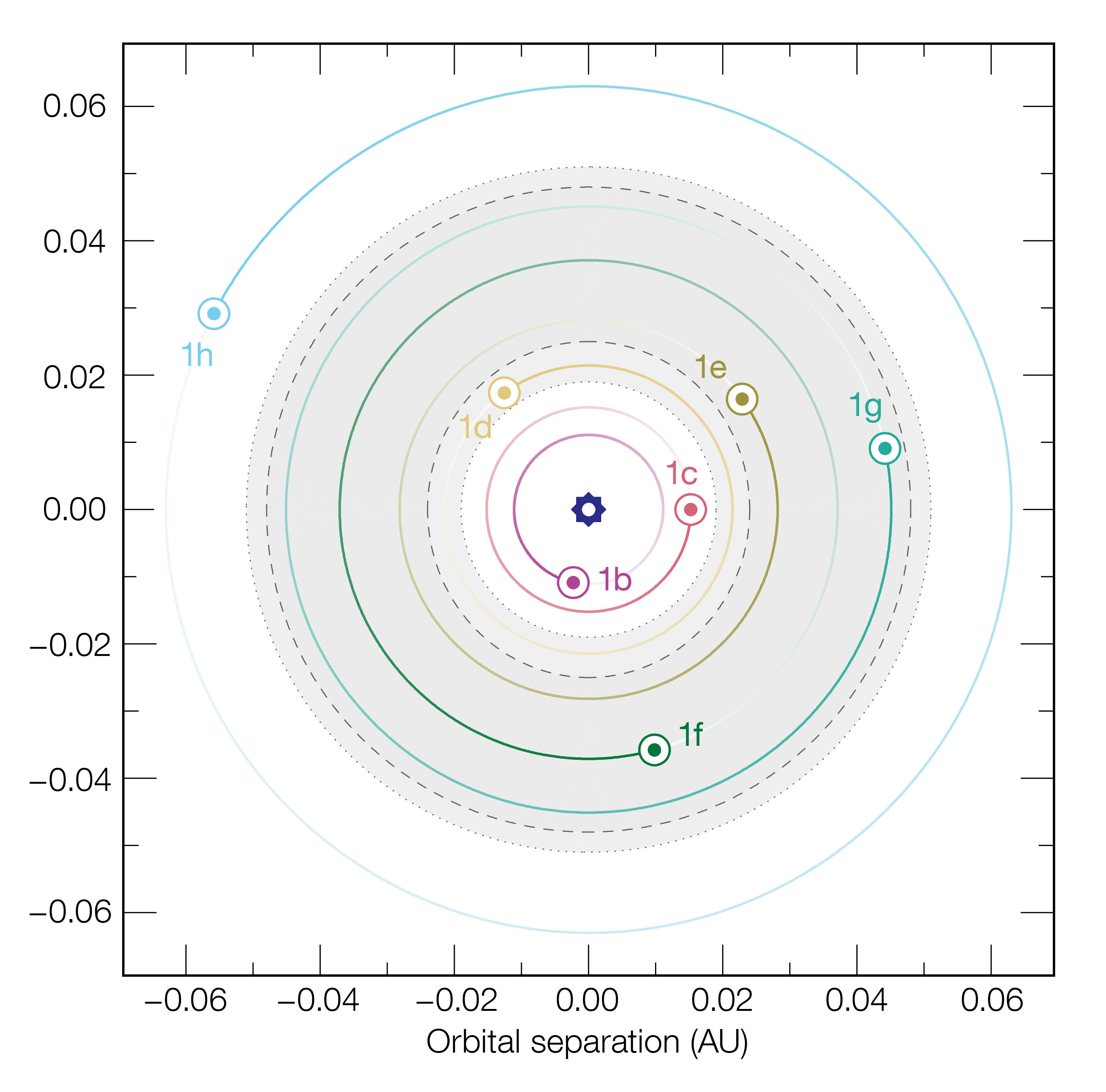
This diagram shows the orbits of seven planets around the cool red dwarf star, TRAPPIST-1. The shaded area shows the star's "habitable zone," where a planet could have the right surface temperature for liquid water. The dotted lines show alternative boundaries to the habitable zone based on different "theoretical assumptions," according to a statement from the European Southern Observatory.
Planetary Transit of TRAPPIST-1
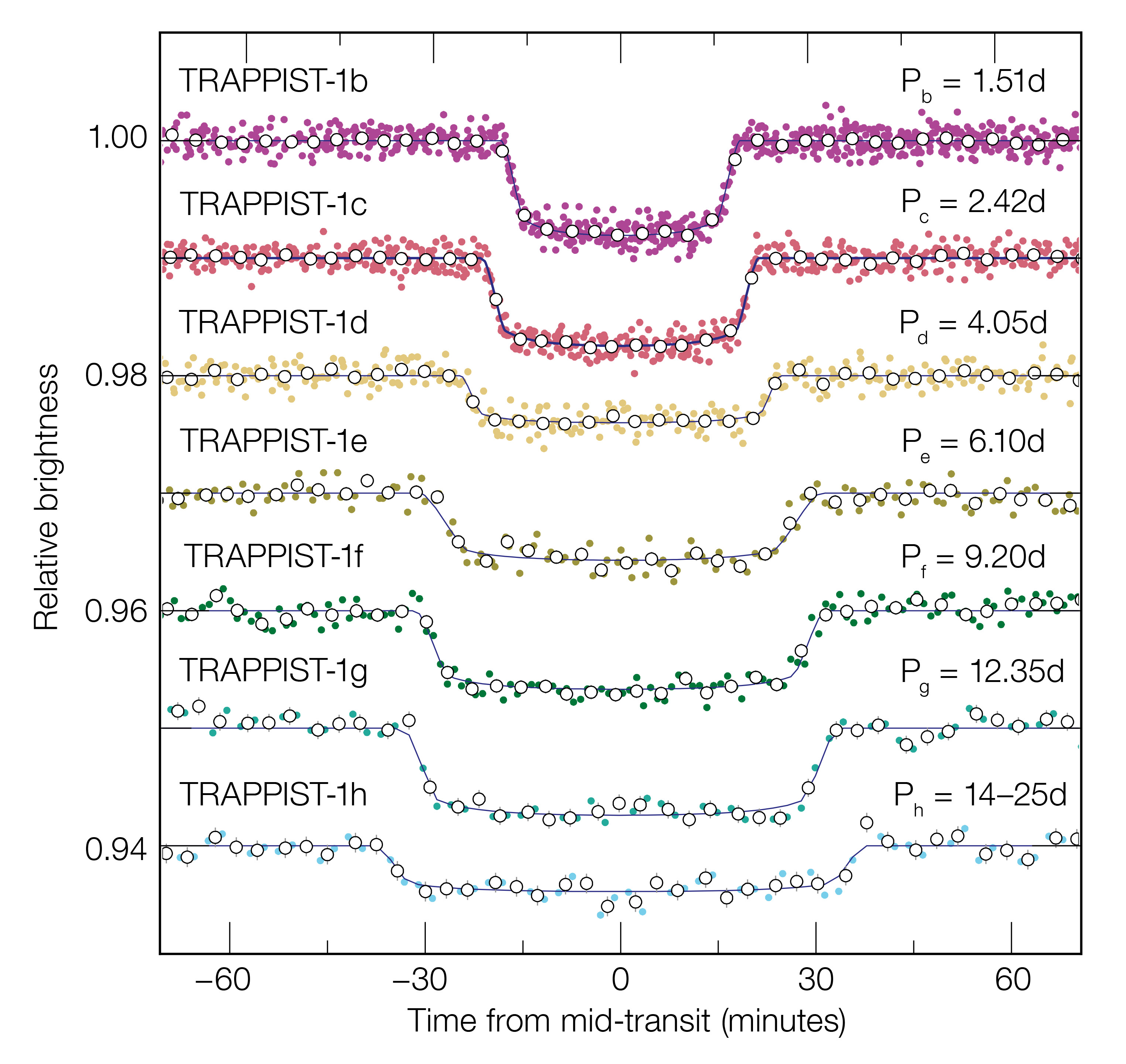
This chart shows how the red dwarf star TRAPPIST-1 appears to grow slightly dimmer each time one of its seven known planets crosses in front of the star )as seen from Earth).
Triple Transit
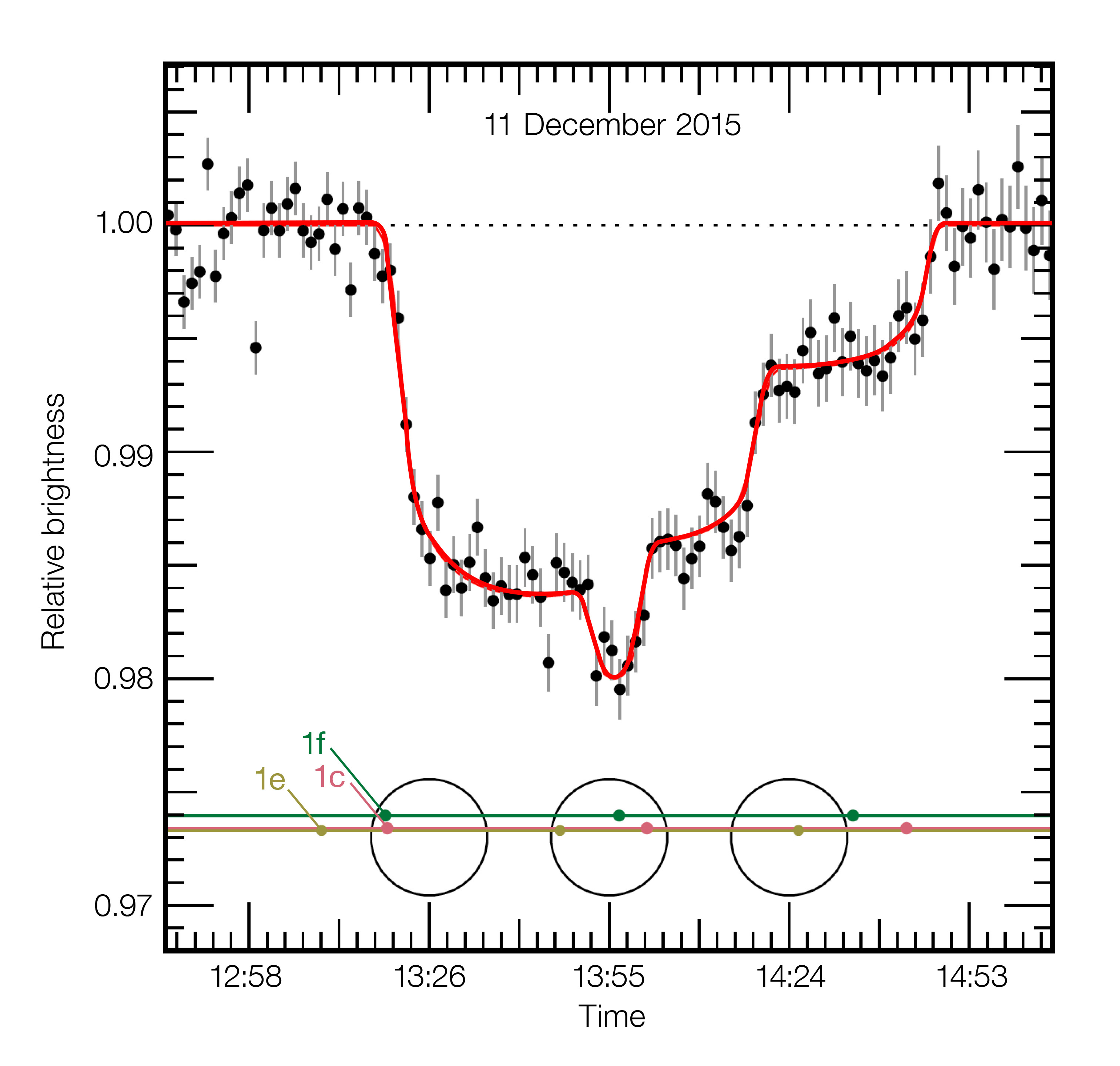
This graph shows the star TRAPPIST-1 during a rare triple transit event. A planetary transit occurs when a planet passes between its parent star and the Earth, causing an apparent change in the star's brightness. In this case, three planets transited the star.
TRAPPIST-1 Brightness Profile
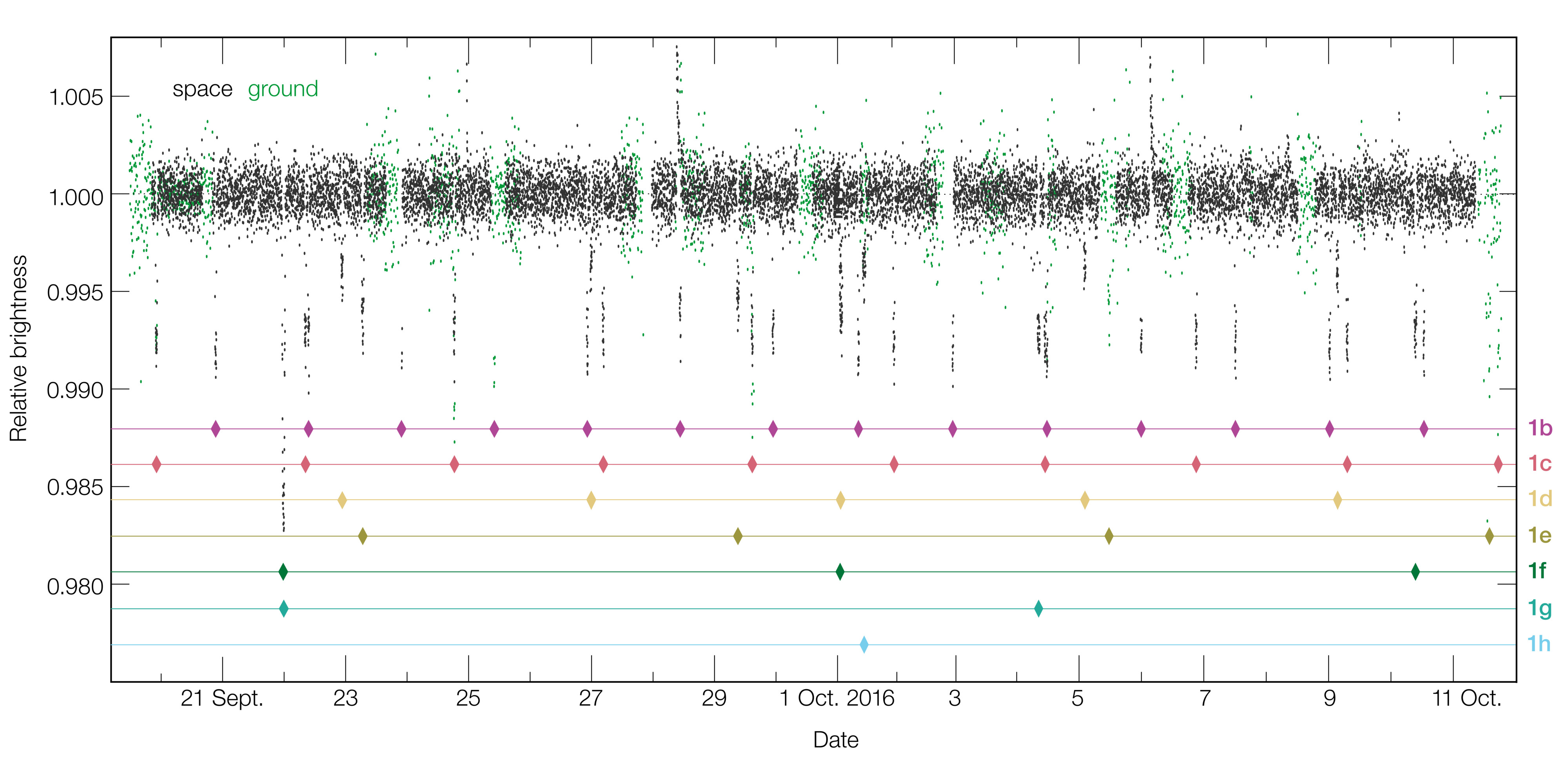
This diagram shows the brightness of the cool red dwarf star TRAPPIST-1 over 20 days. Dips in the brightness are caused by one or more planets orbiting in front of the star and briefly blocking its light.
TRAPPIST-1 Star v Sun
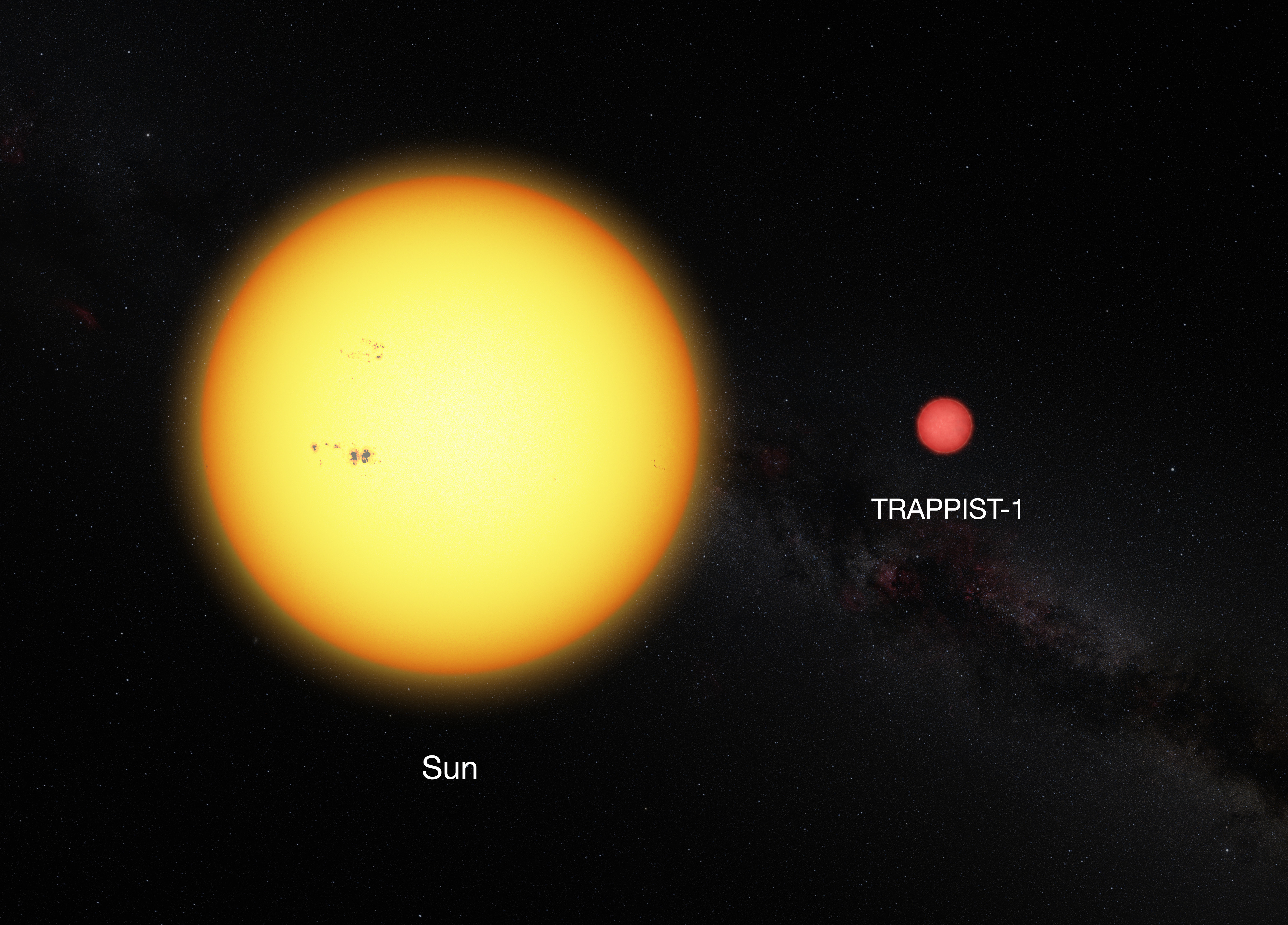
This artist's impression shows the size of Earth's sun compared to the cool red dwarf star TRAPPIST-1. Planets that orbit closer to the star than Mercury orbits the sun can still have surface temperatures cool enough to support liquid water.
TRAPPIST-1 Solar System Comparison

This diagram compares the TRAPPIST-1 planet system with Earth's solar system. The size of Earth's sun is shown with regard to the red dwarf star, TRAPPIST-1. The position of the seven planets around TRAPPIST-1 are shown in relation to Mercury's orbit around the sun.
TRAPPIST-1 Size Comparison
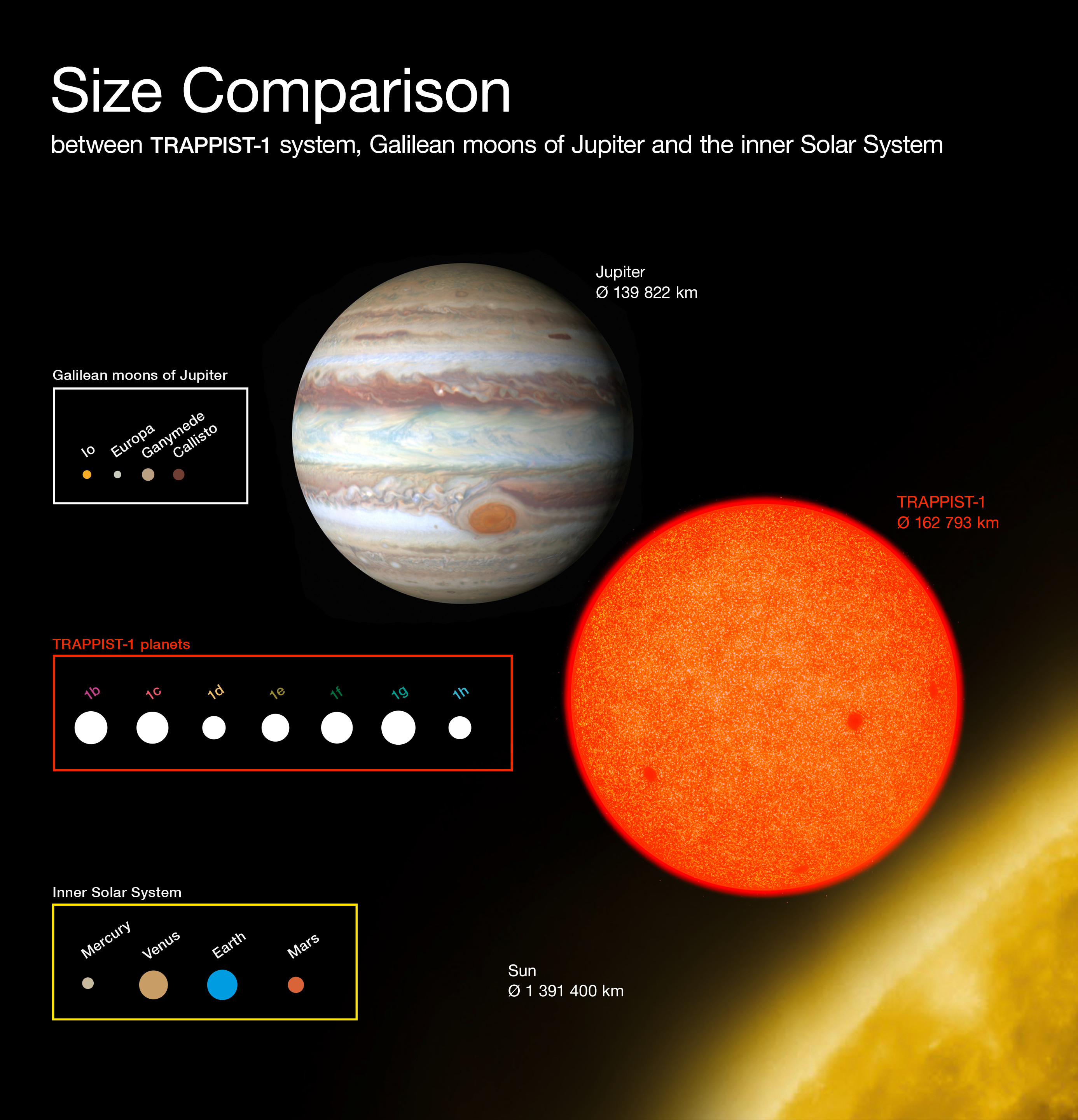
A size comparison of the TRAPPIST-1 system with the sun and the inner-most planets, as well as Jupiter and its largest moons.
Get the Space.com Newsletter
Breaking space news, the latest updates on rocket launches, skywatching events and more!
TRAPPIST-1 and Galilean Moons
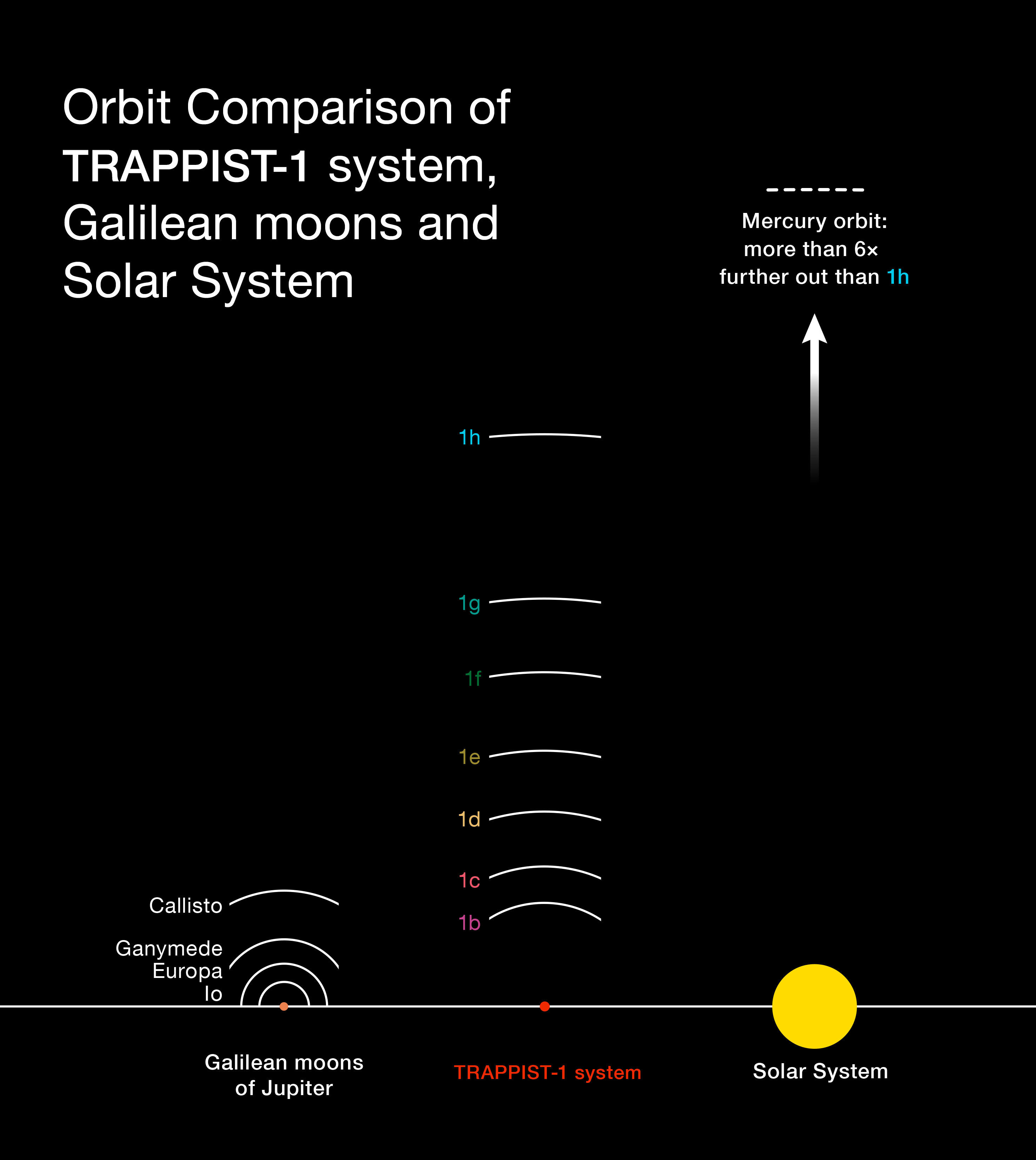
This diagram compares the TRAPPIST-1 system to the orbits of some of Jupiter's largest moons.
A Distant View in TRAPPIST-1
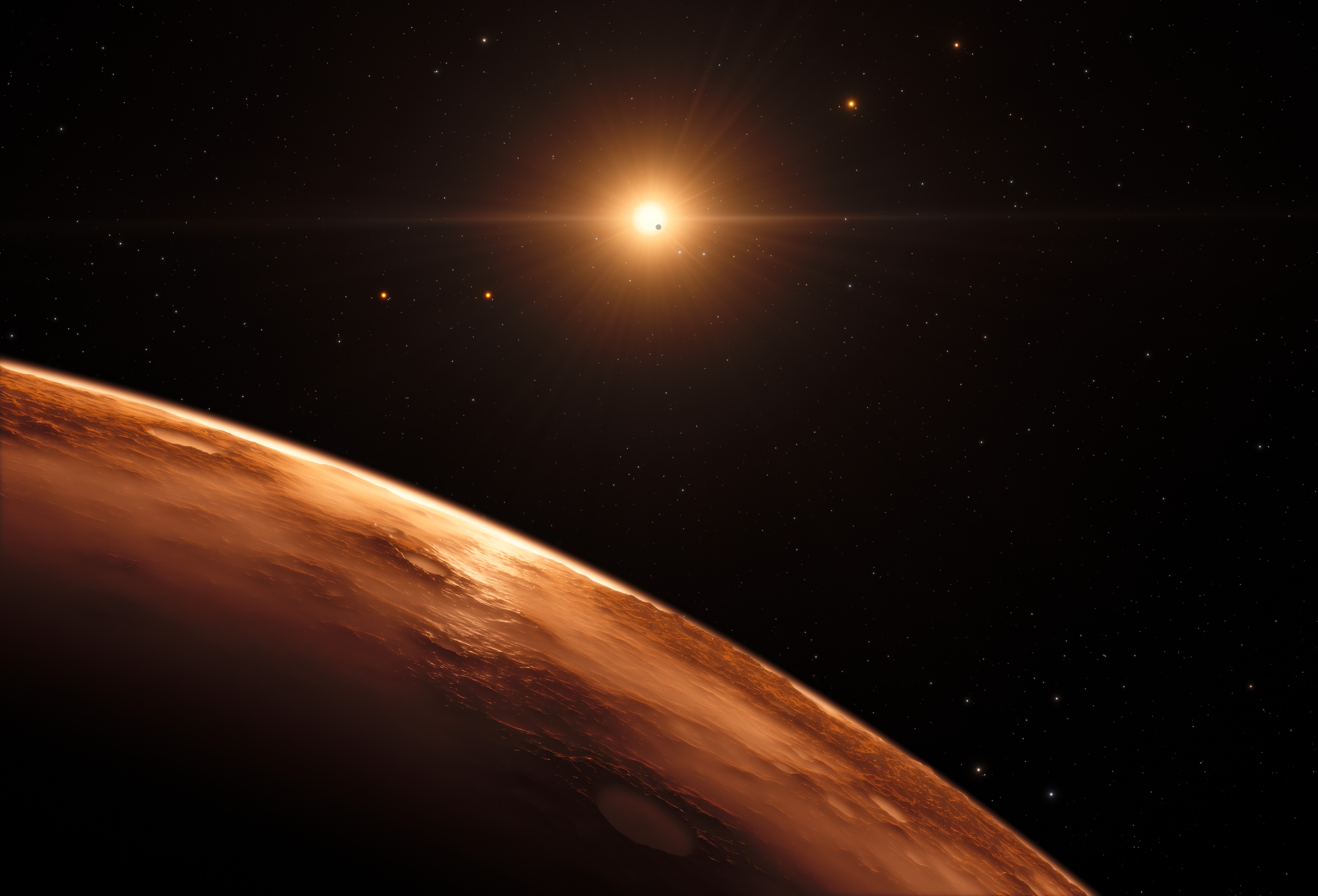
An artist's impression of what an observer might see standing on one of the more distant planets known to orbit the cool dwarf star TRAPPIST-1.
A View from TRAPPIST-1
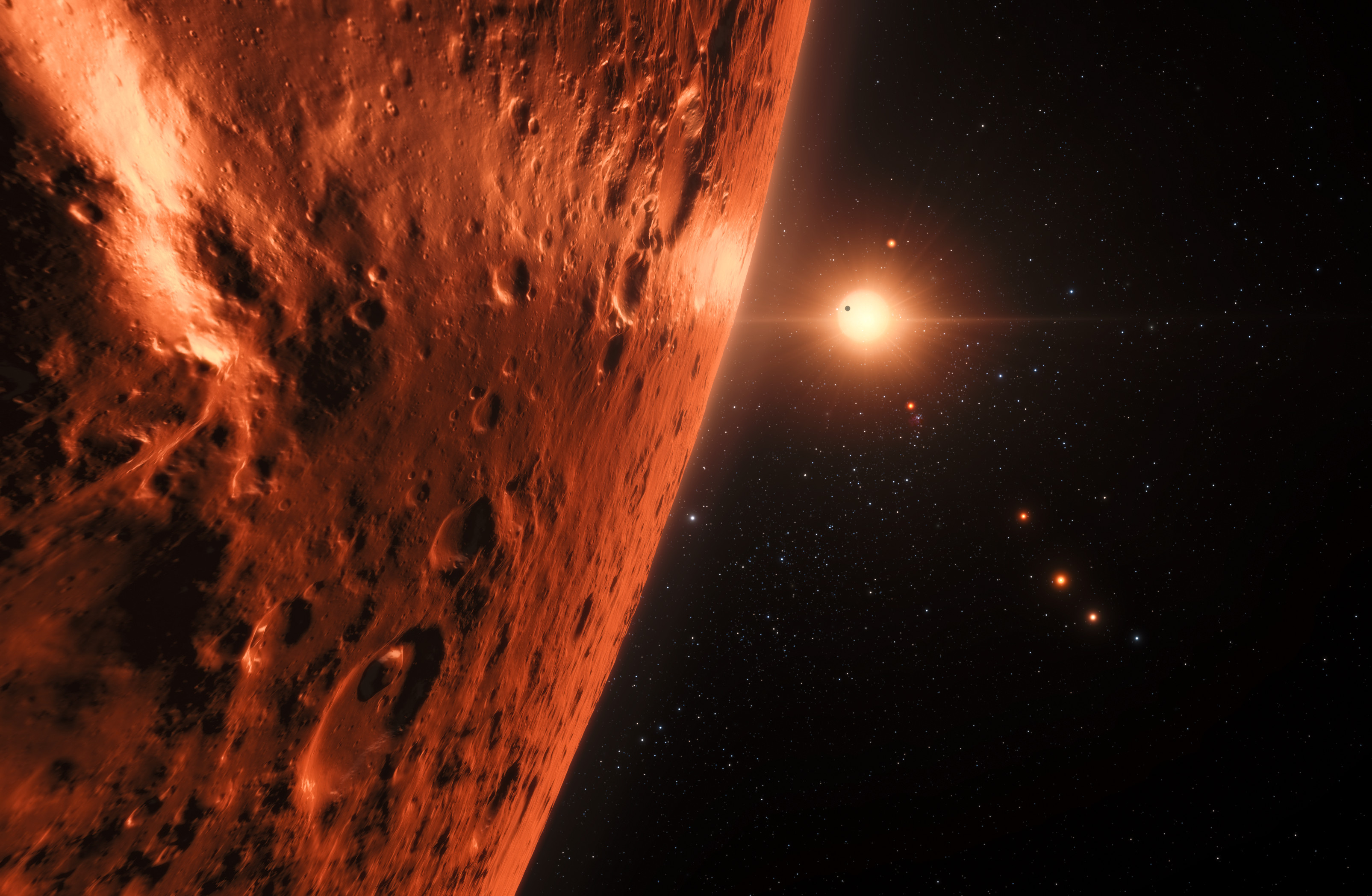
An artist's impression of what it might look like from the surface of a planet in the TRAPPIST-1 system.
Join our Space Forums to keep talking space on the latest missions, night sky and more! And if you have a news tip, correction or comment, let us know at: community@space.com.

Tariq is the Editor-in-Chief of Space.com and joined the team in 2001, first as an intern and staff writer, and later as an editor. He covers human spaceflight, exploration and space science, as well as skywatching and entertainment. He became Space.com's Managing Editor in 2009 and Editor-in-Chief in 2019. Before joining Space.com, Tariq was a staff reporter for The Los Angeles Times covering education and city beats in La Habra, Fullerton and Huntington Beach. In October 2022, Tariq received the Harry Kolcum Award for excellence in space reporting from the National Space Club Florida Committee. He is also an Eagle Scout (yes, he has the Space Exploration merit badge) and went to Space Camp four times as a kid and a fifth time as an adult. He has journalism degrees from the University of Southern California and New York University. You can find Tariq at Space.com and as the co-host to the This Week In Space podcast with space historian Rod Pyle on the TWiT network. To see his latest project, you can follow Tariq on Twitter @tariqjmalik.









